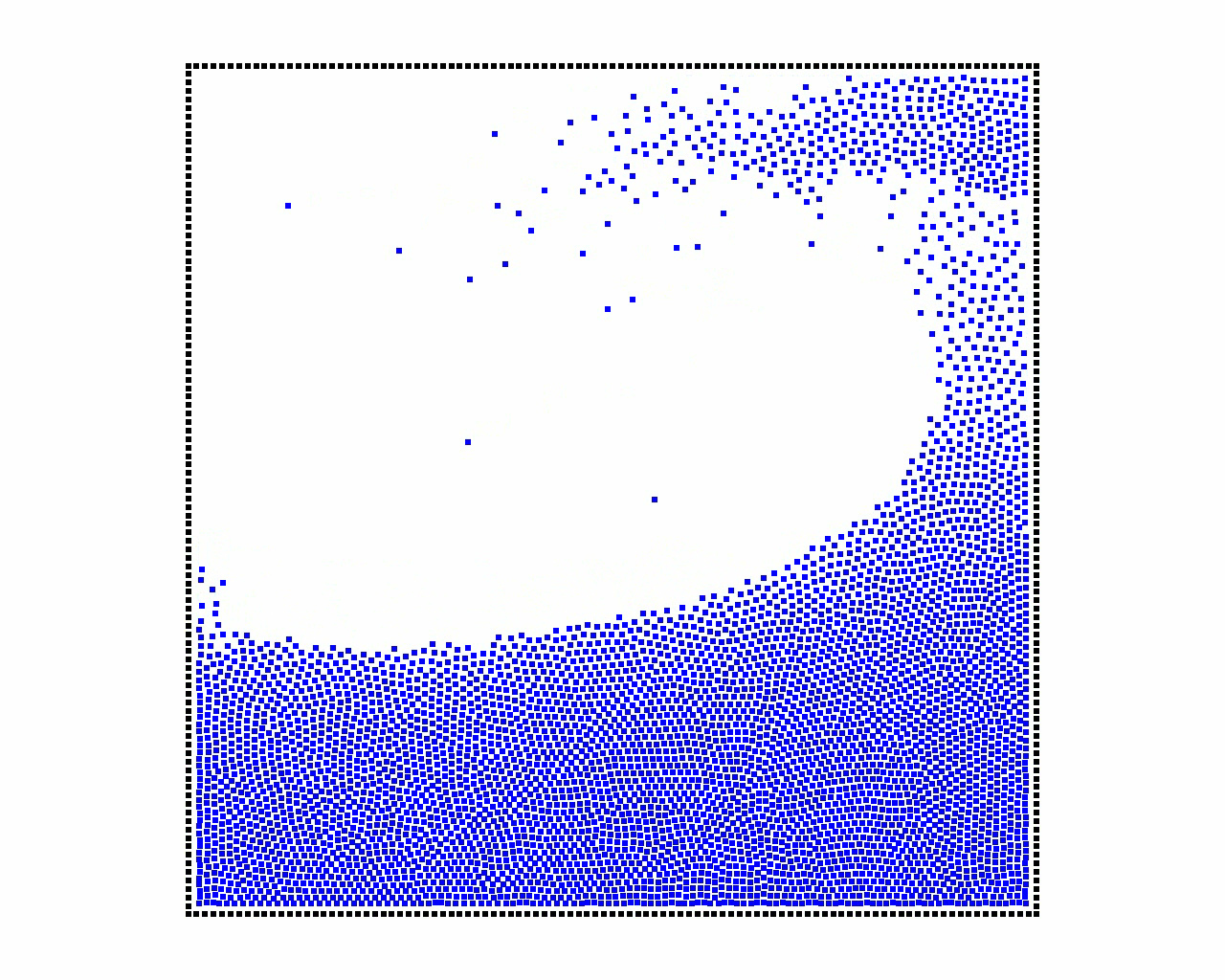Section: New Results
Models for motion and animation
Physical models
Participants : Marie-Paule Cani, François Faure, Pierre-Luc Manteaux.
Frame-based deformable solids Our frame-based deformable model was published as a book chapter [31] . It combines the realism of physically based continuum mechanics models and the usability of frame-based skinning methods, allowing the interactive simulation of objects with heterogeneous material properties and complex geometries. The degrees of freedom are coordinate frames. In contrast with traditional skinning, frame positions are not scripted but move in reaction to internal body forces. The deformation gradient and its derivatives are computed at each sample point of a deformed object and used in the equations of Lagrangian mechanics to achieve physical realism. We introduce novel material-aware shape functions in place of the traditional radial basis functions used in meshless frameworks, allowing coarse deformation functions to efficiently resolve non-uniform stiffnesses. Complex models can thus be simulated at high frame rates using a small number of control nodes.
|
Adaptive particle simulation In collaboration with the NANO-D Inria Team, we have explored the use of Adaptively Restrained (AR) particles for graphics simulations [25] . Contrary to previous methods, Adaptively Restrained Particle Simulations (ARPS) do not adapt time or space sampling, but rather switch the positional degrees of freedom of particles on and off, while letting their momenta evolve. Therefore, inter-particles forces do not have to be updated at each time step, in contrast with traditional methods that spend a lot of time there. We first adapted ARPS to particle-based fluid simulations, as illustrated in 7 and proposed an efficient incremental algorithm to update forces and scalar fields. We then introduced a new implicit integration scheme enabling to use ARPS for cloth simulation as well. Our experiments showed that this new, simple strategy for adaptive simulations can provide significant speedups more easily than traditional adaptive models.
Skinning virtual characters
Participants : Marie-Paule Cani, Damien Rohmer.
Skinning is a widely used technique to deform articulated virtual characters. It can be computed fastly and therefore can deliver real-time feedback at the opposite of physically based simulation. Still standard skinning approaches cannot handle well large deformations and may require manual corrections.
In collaboration with Loic Barthe and Rodolphe Vaillant from University of Toulouse, and collaborators from Victoria University, Inria Bordeaux and University of Bath, we develop a new automatic correction for skinning deformation that has been published in SIGGRAPH [14] . Based on the volumetric implicit representation paradigm, it adjust the mesh vertices and improves the visual appearance of the deformed surface. Moreover, it seamlessly handle skin contact ensuring that no self collision can occurs as seen in fig. 8 . Finally, the method can mimic muscular bulges controled by the implicit blending operators described in the work [7] .
|
Animating crowds
Participants : Marie-Paule Cani, Quentin Galvane, Kevin Jordao, Kim Lim.
Crowd animation is an interesting case, since it can be either computed by developing artificial intelligence methods, by using physically-based simulation of some extended particle systems, or by applying a kinematic texturing methodology, made possible by the repetitive nature of crowd animations. We launched this new topic in the group in 2013, enabling us to explore the two last crowd animation methods:
Firstly, in collaboration with the University SAINTS, Malaysia, we extended particle-based crowd simulation to the case when 4 different populations, with different goals and behaviors, are interacting within the same environment [24] . This as illustrated by a cultural heritage application, with the reconstruction of past life in a harbor in Malaysia in the 19th century: see Figure 9 .
|
Secondly, within the ANR project CHROME with Inria Rennes, we adopted the crowd-patches technique, i.e. the idea of combining patches carrying pre-computed crowd trajectories, for quickly populating very large environments [23] . We are currently developing novel methods for enabling the interactive space-time editing of these animations (a paper will be published at the next Eurographics conference).






